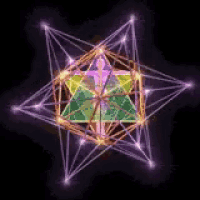Notes on the "Four Winds" of Revelation 7:1
Verse Text
And after these things I saw four angels standing on the four corners of the earth, holding the four winds of the earth, that the wind should not blow on the earth, nor on the sea, nor on any tree. Rev. 7:1
KJV
And after that, I sawe foure Angels stand on the foure corners of the earth, holding the foure windes of the earth, that the winds should not blow on the earth, neither on the sea, neither on any tree. Rev. 7:1
1599 GNV
Urban's Bible Resources
See my free Bible Resources: https://urbanslibrary.substack.com/p/bible
Other References to the "Four Winds"
Additional References & Strong's
Rev. 4:6Rev. 9:14Ezekiel 7:2Ezekiel 37:9Zechariah 1:18Zechariah 1:19Zechariah 1:20Zechariah 6:1Matthew 24:31Mark 13:27
Strong's No. 417 & 109



Cosmic and Divine Functions:
- Support and Structure: The four winds are said to literally support the earth and the firmament of the heaven. They also stretch out the height of heaven and have their station between heaven and earth, acting as pillars of heaven.
- Celestial Movement: They are responsible for turning and bringing the sky, the sun, and all the stars to their setting place.
- Atmospheric Activity: On earth, they carry clouds.
- Controlled Release: There are "storehouses" for all winds, which are part of God's adornment of creation. Their release is carefully measured and controlled by "key-holders" using weighing scales to prevent the "heavy winds from making the earth rock". This implies a precise, divine regulation of their force.
- Angelic Agency: The four winds are held by four angels standing at the four corners of the earth, who can prevent them from blowing on the earth, sea, or any tree. These "four spirits" (or angels) are associated with the "time of the end" and judgment.
- Divine Presence and Chariots: Divine encounters are frequently associated with "great wind" or "whirlwind" and storm imagery, often accompanied by fire. Yahweh's chariots are sometimes described as "like the storm wind" or "Chariots of Wind".
- Merkabah and Chayoth: In visions of the Merkabah (divine chariot), there are "four winds compassing them round about" named "the Winds of the Storm," "the Tempest," "the Strong Wind," and "the Wind of Earthquake". The "Four Chayoth" (living creatures) in these visions correspond to the four winds and are involved in shaping intelligence and creation in the "four directions of galactic darkness".
The Merkaba

Nature and Effects:
- Varied Impact: From twelve "doors of heaven" through which winds emerge, four bring blessing and prosperity (peace), while eight bring hurtful winds causing destruction on the earth and its waters.
- Specific Manifestations: These winds can manifest in diverse ways, bringing desolation, drought, heat, cold, hail, frost, snow, locusts, rain, fruitfulness, fragrant smells, and health.
- Named Winds: Specific winds blowing under the wings of the Cherubim include the "Brooding Wind," "Strong Wind," "East Wind," "Wind of Quails," "Wind of Jealousy," "Wind of Earthquake," "Wind of YHWH," "Evil Wind," "Wind of Wisdom," "Wind of Understanding," "Wind of Knowledge," "Wind of the Fear of YHWH," "Wind of Rain," "Wind of Lightning," "Wind, Which Breaks the Rocks," "Wind of Assuagement of the Sea," and "Wind of Wrath".
- North Wind and Evil: The "north wind" is specifically connected to cold, evils, and is even symbolically understood to represent the devil.
- East Wind and Blight: The "east wind" is often depicted as a blight-ing wind, associated with evil, in contrast to good coming from the west.
Connection to "Spirit" (Ruach):
- A crucial aspect of understanding "wind" in this context is that the Hebrew word ruach, often translated as "wind," can also be rendered as "spirit" or "Spirit".
- This connection implies that "wind" represents an invisible force. When certain attributes like jealousy are associated with "wind," it can be seen as an agent of God, such as an angel or even a demon.
- The phrase "The wind bloweth where it listeth, and thou hearest the sound thereof, but canst not tell whence it cometh, and whither it goeth: so is every one that is born of the Spirit" directly illustrates this dual meaning of pneuma (Greek for wind/spirit).
In essence, the "four winds" are not merely atmospheric phenomena but represent powerful, divinely controlled forces integral to the cosmos, capable of both blessing and destruction, and often symbolic of the unseen spiritual realm and divine activity.
Additional Info
From Swedenborg's Concordences






